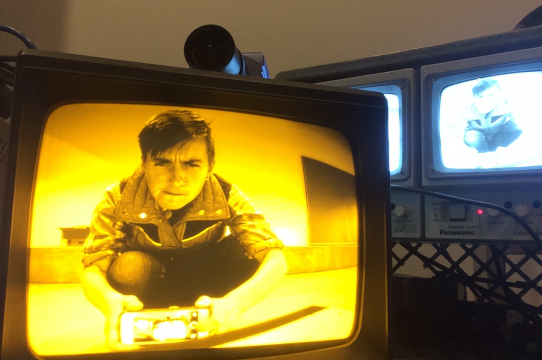Kristen Gillette’s first encounter with UC Santa Cruz happened when she made the trek up from UCLA to UCSC for a one-quarter UC Intercampus Exchange Program. The school and its beautiful surroundings turned out to have an impact that would charter the course of her future career.
“I was really interested in puppetry at the time, and requested to attend UCSC in order to take Theater Arts’ Muppet Magic course taught by Distinguished Professor Emerita Dr. Kathy Foley,” said Gillette. “Outside of academia, I was also considering a creative career in the surf/skate industry, so UCSC seemed like an ideal place to check-out for a few months.”
After completing her undergrad courses in the Design Media Arts program at UCLA, she moved back to Santa Cruz, and, after several years and professional pursuits, attended graduate school at UCSC, earning an MFA in Digital Arts and New Media, in 2015. “Something about the school’s structure, opportunities, and faculty made it so much more conducive to creative collaboration, activist organizing and community building compared to what I had been able to figure out at UCLA,” she says. “And that view from the East Field, and being so close to redwoods and the ocean – that was a huge draw as well.”
Gillette, who grew up in the Bay Area, was raised by parents and extended family with deep roots in Oakland, San Francisco, and the Bay Area. She’s enjoyed various career paths throughout the years, as well as in and out of academia, has been a lecturer, and has now recently joined the UCSC Arts Division faculty in the new Performance, Play and Design Department.
“As a teaching professor, my pedagogical teaching practice is also my research focus. I am – to my core – a designer and a teacher,” she says. “To me, these frameworks operate hand-in-hand and inform one another. They also form the touchstones of both my design and teaching practices: I can’t really separate one from the other.
“As a designer, clear communication and increasing access to ideas, information, and solutions drive my creative practice. As a teacher, my approach to curriculum planning, instruction, and course development is student-centered and design-driven. This unique methodology lends itself to effective teaching, and I believe this is one of my greatest strengths as an educator. It is also the basis of a body of research, teaching, and course development that I plan to pursue further here at UCSC.”
Recognizing that many students have had to endure challenges this past year around the pandemic, systemic racism/oppression and other forms of marginalization, Gillette says that she has always been inspired by students. “This has been such a difficult, challenging and tumultuous time for so many folks and communities. I am constantly amazed by the resiliency, adaptability and strength that students have demonstrated, whether that means continuing their studies or needing to prioritize other aspects of their lives.”
Gillette also recognizes that we will never really return to the way things were or what we considered to be “normal” prior to the pandemic. She stresses to students that “normal” was not tenable or sustainable for so many and that faculty and staff are discovering ways to drastically revise what learning and teaching look like on the UCSC campus. “I do not believe there is any ‘going back’ after this time, but that that isn’t a negative thing. And I, and so many others, are looking and planning forward.”


